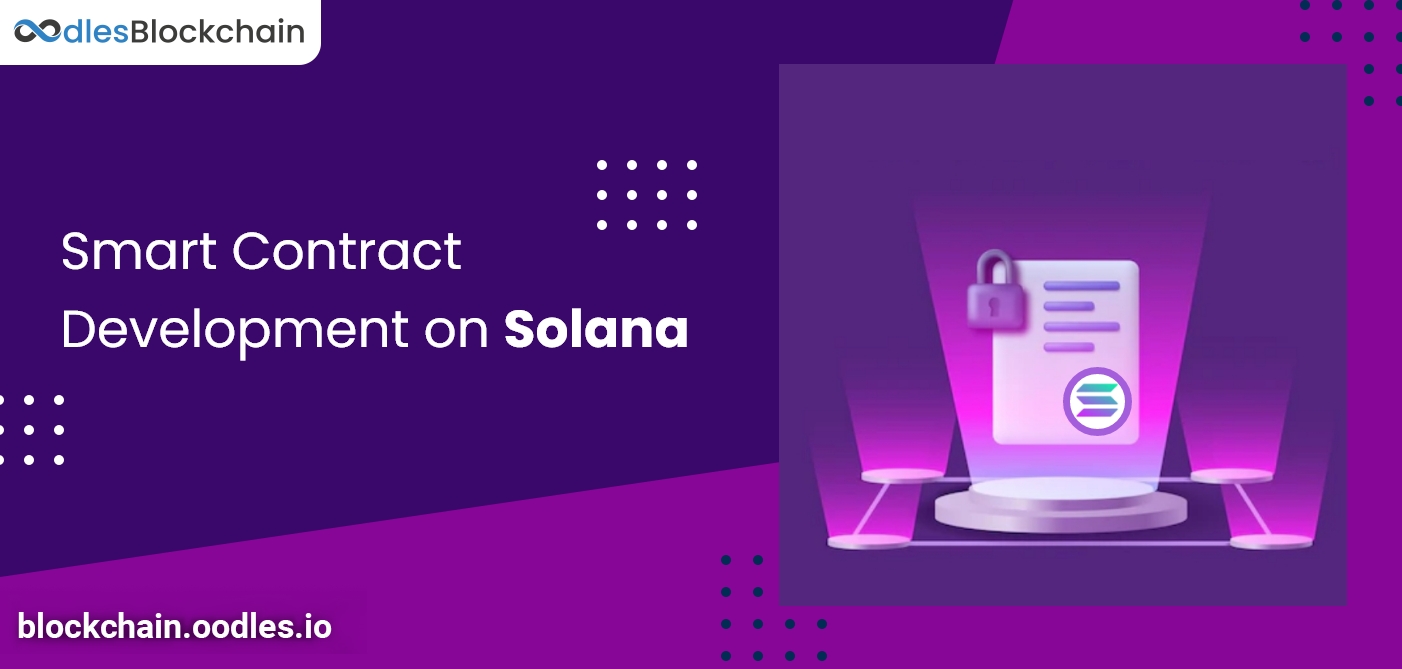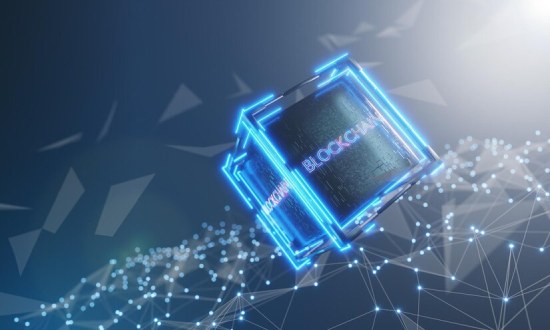-
The world of blockchain continues to expand rapidly, introducing new networks and protocols that promise faster transaction speeds, lower fees, and robust security. Solana blockchain development is one such platform that has captured the interest of developers, investors, and businesses alike. Boasting high throughput, near-instant finality, and minimal transaction costs, Solana is increasingly becoming a preferred choice for deploying decentralized applications (dApps) and smart contracts.
In this comprehensive blog, we will delve into why Solana has emerged as a formidable competitor in the blockchain sphere, explore the unique features of its architecture, discuss its smart contract development ecosystem, and analyze the real-world potential for B2B enterprises. We will also cover some best practices, challenges, and common FAQs to help you make informed decisions about building on Solana.
The Rise of the Solana Blockchain
Solana, launched in 2020 by the Solana Foundation, is a high-performance blockchain designed to facilitate scalable and efficient decentralized applications. Its ethos is rooted in solving the scalability trilemma: achieving high levels of decentralization, security, and scalability without compromising any single aspect.
Market Adoption
Solana's rapid growth can be partially attributed to its strong market support. Many decentralized finance (DeFi) projects, non-fungible token (NFT) marketplaces, and enterprise-level applications have chosen Solana to tap into its speed and low transaction fees. The ecosystem's blossoming community of developers, venture capitalists, and ecosystem funds further catalyzes the adoption of Solana-based projects.
High-Profile Collaborations
Partnerships with major players in the crypto and traditional finance sectors highlight Solana's appeal. By aligning with established brands and venture funds, the blockchain has garnered widespread recognition and legitimacy.
Vision for the Future
Solana aims to support a diverse range of projects—from DeFi and gaming to supply chain management and digital identity solutions. The sheer versatility of Solana's architecture makes it a prime contender for powering the next generation of decentralized technologies.
Also, Read | Build a Crypto Payment Gateway Using Solana Pay and React
Understanding Solana's Unique Architecture and Scalability
The cornerstone of Solana's success lies in its unique approach to consensus and data processing. Unlike many blockchains that struggle with high network congestion and rising fees, Solana employs a series of innovations that allow it to process thousands of transactions per second (TPS) efficiently.
Proof of History (PoH)
Proof of History is a cryptographic method that provides a verifiable record of time between transactions. By embedding timestamps in the ledger, Solana eliminates the need for every node in the network to agree on the ordering of events in real-time. This drastically speeds up the consensus process and ensures transactions can be processed in parallel without losing the chronological order.
Tower BFT Consensus
Solana uses a modified version of Practical Byzantine Fault Tolerance (pBFT) called Tower BFT. The integration of PoH with Tower BFT helps nodes reach consensus on the network's state more quickly and with minimal overhead. This combination ensures the network can handle a large volume of transactions while maintaining security.
Turbine Protocol
Data propagation can be a bottleneck in large-scale networks. Solana's Turbine protocol splits data into smaller packets and distributes them through a network of nodes in a tree-like structure. This ensures that data transfer remains quick and efficient, even as the network grows.
Pipelining
Solana adopts a pipelining approach where different stages of transaction processing (fetching data, signature verification, banking, writing results) occur in parallel across different hardware components. This division of labor drastically reduces latency and boosts overall throughput.
Sealevel Runtime
Solana's parallel smart contract runtime, Sealevel, allows multiple smart contracts to run concurrently using the same state. By optimizing the way the network schedules and processes transactions, Sealevel ensures that resource utilization remains high while conflicts and bottlenecks are minimized.
Gulf Stream
This transaction forwarding protocol bypasses traditional mempool mechanisms. Instead of storing pending transactions in a mempool, nodes forward them to the leader before they are confirmed. By doing so, Solana can handle more transactions at scale without extensive queuing.
Impact on Throughput and Costs
Due to these architectural innovations, Solana consistently processes thousands of transactions per second, with the theoretical capability to reach even higher figures. Moreover, the network boasts very low transaction fees—often just a fraction of a cent—which is a game-changer for many businesses looking to scale their blockchain applications without incurring exorbitant costs.
Also, Explore | How to Create a Multi-Signature Wallet on Solana using Rust
The Role of Rust in Solana Smart Contract Development
While some blockchain platforms use languages like Solidity, Vyper, or Move, Solana primarily leverages Rust for building its on-chain programs (smart contracts). Rust is known for its performance, memory safety, and concurrency—making it a perfect fit for Solana's parallelized architecture.
Why Rust?
- Memory Safety: Rust's stringent compile-time checks help avoid common bugs such as null pointers, buffer overflows, and data races. This reduces the risk of security vulnerabilities—a critical consideration for smart contracts dealing with digital assets and sensitive data.
- High Performance: Rust compiles down to native code, allowing developers to build programs that run with near C-level efficiency. This performance advantage is vital for executing complex operations on a high-throughput blockchain like Solana.
- Strong Community and Tooling: The Rust community is vibrant, offering numerous libraries and frameworks that can be integrated into Solana smart contracts. Tools like Anchor, for example, simplify the process of writing and deploying Rust-based smart contracts on Solana.
Alternative Languages
While Rust is the primary choice, Solana also supports limited use of C and C++. However, Rust remains the most popular language due to its robust safety features and growing ecosystem within the Solana developer community.
Learning Curve
Rust's syntax and concepts (ownership, borrowing, and lifetimes) can be challenging for newcomers, but the language offers a steep but rewarding learning curve. Once developers adapt to Rust, they can write highly secure and efficient code that takes full advantage of Solana's parallel execution model.
Also, Check | Creating a Token Vesting Contract on Solana Blockchain
Key Business Use Cases of Solana Smart Contracts
With its high throughput and low costs, Solana is well-suited for an array of enterprise and consumer-facing applications. Below are some of the key use cases gaining traction:
Decentralized Finance (DeFi)
DeFi was one of the first industries to truly showcase the capabilities of Solana. From decentralized exchanges (DEXs) like Serum to lending protocols and automated market makers, many DeFi projects migrate to or launch on Solana to leverage its speed and cost advantages. This efficiency not only improves user experience but also opens doors for advanced financial products such as margin trading, derivatives, and real-time settlement.
Non-Fungible Tokens (NFTs)
The NFT market has exploded in recent years, with platforms on Ethereum often facing high gas fees. Solana's minimal fees and rapid transaction times make it attractive for minting and trading NFTs. Artists, gaming companies, and collectible platforms have embraced Solana to deliver better scalability and user experience.
Payments and Remittances
Solana's near-instant finality and low fees are particularly relevant for cross-border payments and remittances, which often suffer from high transaction costs in traditional finance. Businesses seeking to offer efficient global payment rails can benefit from Solana's speed, reducing settlement times from days to seconds.
Supply Chain and Logistics
Tracking goods across complex supply chains can be enhanced by blockchain transparency. Solana's architecture ensures that updates to the supply chain are recorded efficiently, enabling real-time tracking and verification of products. This capability opens up opportunities in industries such as pharmaceuticals, agriculture, and manufacturing.
Enterprise Solutions and Tokenization
Beyond DeFi and NFTs, enterprises can use Solana to tokenize real-world assets such as real estate, commodities, or company shares. Tokenization on a high-throughput chain enables dynamic use cases like instant settlement, fractional ownership, and global investor reach.
Gaming and Metaverse
The gaming world demands high-frequency transactions—think in-game currencies, asset transfers, and complex interactions among numerous players. Solana's speed and efficiency are ideal for building metaverse and gaming applications that rely on real-time asset updates and microtransactions.
Also, Discover | Integrate Raydium Swap Functionality on a Solana Program
Developer Tools and Ecosystem
The Solana ecosystem is more than just a blockchain; it's an evolving landscape of tools, libraries, and community resources that facilitate the entire application development lifecycle.
Solana CLI and SDK
Solana provides Command Line Interface (CLI) tools and Software Development Kits (SDKs) for developers. These tools help with tasks like setting up local environments, compiling smart contracts, and interacting with the on-chain programs during testing.
Anchor Framework
The Anchor framework simplifies Solana smart contract development by abstracting away complex code patterns. With Anchor, developers can focus on business logic rather than low-level implementations, leading to faster development cycles and fewer bugs.
Solana Explorer
A user-friendly block explorer allows developers and users to view transactions, blocks, and accounts on the Solana network in real-time, aiding in debugging and transparency.
Third-Party Integrations
Many third-party services offer API integrations, analytics platforms, and node infrastructures specifically tailored for Solana. This external support helps reduce development overhead and ensures that developers can quickly deploy and scale their dApps.
Grants and Incubators
The Solana Foundation and various ecosystem funds provide grants, hackathons, and incubator programs to nurture innovative projects. For businesses, these funding avenues can significantly reduce the initial costs associated with research and development, while also connecting them to a supportive community.
You may also like | How to Build a Solana Sniper Bot
Security and Best Practices
Security remains a paramount concern in any blockchain project, and Solana-based applications are no exception. Here are some best practices:
Thorough Testing
Before deploying to Solana's mainnet, conduct extensive testing in a local environment or on Solana devnet. Write both unit and integration tests to identify vulnerabilities or logic errors.
Code Audits
Engage reputable third-party auditors for a thorough review of your Rust smart contracts. These auditors can catch potential re-entrancy issues, race conditions, or other vulnerabilities unique to Solana's parallel execution model.
Use Established Frameworks
Leverage mature frameworks like Anchor, which implement security patterns by default. By building on top of proven libraries, you reduce the chances of reinventing insecure code.
Data Validation
Always validate inputs, particularly those coming from users. Ensure that your program gracefully handles edge cases and unexpected data, preventing malicious exploits.
Access Control
Implement role-based access controls and permissioning within your contracts. Ensure that only authorized accounts can execute sensitive functions or modify critical data.
You might also be interested in | SPL-404 Token Standard | Enhancing Utility in the Solana Ecosystem
Challenges and Considerations
While Solana offers impressive capabilities, it's important to acknowledge potential hurdles:
Rust Learning Curve
Rust is a powerful but complex language. Businesses must account for training and ramp-up time if their developers are new to Rust.
Network Decentralization
Solana's high throughput requires robust hardware to run validator nodes. This can raise concerns about network decentralization, as smaller participants may find it challenging to maintain the required hardware infrastructure.
Evolving Tooling and Documentation
Although the Solana ecosystem is growing rapidly, some parts of its tooling and documentation may still be considered immature compared to more established platforms like Ethereum. Developers should be prepared to troubleshoot and potentially contribute to open-source tools.
Regulatory Environment
Like all blockchain technologies, projects on Solana are subject to evolving global regulations. Businesses planning large-scale or cross-border initiatives need to stay informed and compliant with relevant financial and data protection laws.
Competition
Blockchain is an increasingly crowded space, with multiple high-speed networks vying for market share (e.g., Avalanche, Polygon, Aptos). Conduct a thorough assessment of your project's needs before committing to Solana or any other chain.
You may also like to discover | How to Get the Transaction Logs on Solana
Frequently Asked Questions (FAQ)
1. What makes Solana unique compared to Ethereum?
Solana differentiates itself primarily through its high throughput and low transaction fees. While Ethereum relies on a Proof of Stake (PoS) mechanism with sharding in the pipeline, Solana's Proof of History and Tower BFT consensus allow it to process thousands of transactions per second at a fraction of the cost. However, Ethereum has a more mature ecosystem of developers and tools, which may be a deciding factor for some projects.
2. Do I need to learn Rust to develop on Solana?
Rust is the primary language for Solana smart contracts, offering strong memory safety and performance. While you can use C or C++ in some capacities, Rust is recommended due to its broad community support within the Solana ecosystem. The learning curve can be steep, but it often pays off in terms of security and efficiency.
3. How does Solana maintain security at scale?
Solana employs multiple layers of security, including Proof of History for verifiable time sequencing, Tower BFT for consensus, and the Sealevel runtime for parallel smart contract execution. These features, combined with robust code audits and best practices, help maintain security even with high transaction volumes.
4. What are typical use cases for Solana smart contracts?
Popular use cases include DeFi protocols, NFT marketplaces, payment and remittance solutions, and enterprise-level applications for supply chain management or tokenized assets. Solana's speed and low fees make it particularly well-suited for high-volume applications and real-time use cases.
5. Are there any limitations in terms of tooling and developer support?
Solana's ecosystem is rapidly evolving. While its developer tools and libraries are growing daily, some may consider them less mature than established solutions on Ethereum. However, frameworks like Anchor and an active community help smooth out these hurdles for newcomers.
6. Can projects built on Solana easily migrate from other blockchains?
Migration complexity depends on the project's architecture. Smart contracts originally written for EVM-based blockchains (like Ethereum) would need to be rewritten in Rust, which can involve significant development effort. On the bright side, the performance and cost benefits of Solana often justify the transition for projects that require scale.
Conclusion
Solana's approach to blockchain scalability offers a compelling value proposition for businesses and developers seeking to build high-throughput, low-cost decentralized applications. Its unique architecture—anchored by Proof of History and Tower BFT consensus—enables lightning-fast transaction processing and near-zero fees, setting a new benchmark for blockchain performance. Coupled with a robust toolset, including frameworks like Anchor and a supportive developer community, Solana has quickly become a contender for projects ranging from DeFi and NFTs to enterprise supply chain solutions.
However, the journey is not without challenges. Developers must navigate the Rust learning curve, keep an eye on evolving regulatory landscapes, and thoroughly test and audit their smart contracts to mitigate security risks. Additionally, while the Solana ecosystem is expanding rapidly, it may still lack some of the maturity found in older platforms. Nevertheless, for businesses that prioritize speed, scalability, and cost efficiency, Solana can unlock groundbreaking opportunities in the blockchain domain.
As the Solana network continues to attract top-tier talent, funding, and innovative projects, its potential for transforming industries grows exponentially. For B2B enterprises, the time is ripe to explore Solana as a foundation for cutting-edge applications. By investing in developer expertise, following best practices, and leveraging the thriving ecosystem, you can position your business at the forefront of the next wave of decentralized innovation. If you are planning to build and launch your project leveraging the potential of the Solana Blockchain, connect with our skilled Solana blockchain developers to get started.

Our Offices
INDIA
Emaar Digital Greens, Sector 61,
Gurugram, Haryana
122011.
Welldone Tech Park,
Sector 48, Sohna road,
Gurugram, Haryana
122018.














